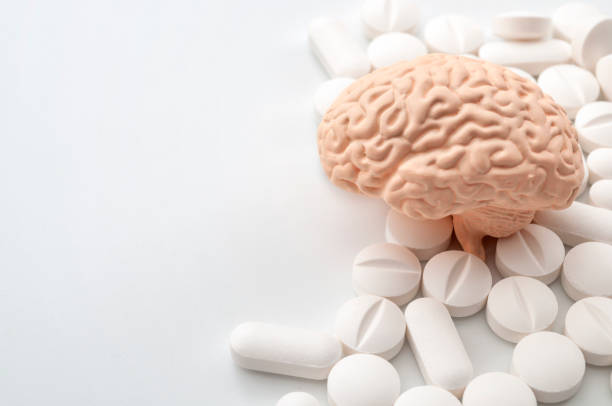Tardive Dyskinesia: The Causes You Should Actually Know About
Tardive dyskinesia is a distressing and often misunderstood neurological disorder that impacts countless individuals. Gaining a clear understanding of its root causes is essential for better awareness and effective management. Explore the surprising reality behind what causes tardive dyskinesia and uncover the complexities of this challenging condition.

What is tardive dyskinesia and how does it manifest?
Tardive dyskinesia is a movement disorder that typically develops as a side effect of long-term use of certain medications, particularly antipsychotics. The condition is characterized by involuntary, repetitive movements that often affect the face, mouth, and tongue. Common tardive dyskinesia signs include grimacing, lip smacking, tongue protrusion, and rapid eye blinking. In some cases, the disorder can also involve the limbs and trunk, causing rhythmic movements or gestures.
Which medications are most commonly associated with TD?
The primary culprits behind tardive dyskinesia are antipsychotic medications, especially first-generation or typical antipsychotics. These drugs are commonly prescribed to treat conditions such as schizophrenia, bipolar disorder, and severe depression. Some examples of medications known to increase the risk of TD include:
-
Haloperidol (Haldol)
-
Chlorpromazine (Thorazine)
-
Fluphenazine (Prolixin)
-
Perphenazine (Trilafon)
It’s important to note that while second-generation or atypical antipsychotics have a lower risk of causing TD, they are not entirely free from this potential side effect.
What are the primary risk factors for developing tardive dyskinesia?
While medication use is the most significant factor in tardive dyskinesia causes, several other risk factors can increase an individual’s susceptibility to developing the condition:
-
Duration of medication use: The longer a person takes antipsychotic medications, the higher their risk of developing TD.
-
Age: Older adults are more vulnerable to TD, with the risk increasing significantly after age 50.
-
Gender: Women, especially postmenopausal women, appear to be at a higher risk than men.
-
Genetics: Some individuals may have a genetic predisposition to developing TD.
-
Substance abuse: Alcohol and drug abuse may increase the likelihood of developing TD.
-
Pre-existing movement disorders: People with other movement disorders may be more susceptible to TD.
How does tardive dyskinesia develop in the brain?
The exact mechanism by which tardive dyskinesia develops is not fully understood. However, researchers believe that prolonged use of antipsychotic medications leads to changes in the brain’s dopamine system. These alterations may result in hypersensitivity of dopamine receptors, particularly in the basal ganglia, a region of the brain responsible for motor control.
This hypersensitivity can cause an imbalance in neurotransmitter activity, leading to the involuntary movements characteristic of TD. Additionally, oxidative stress and neuroinflammation may play a role in the development and progression of the condition.
What are the latest advancements in tardive dyskinesia treatment?
Recent years have seen significant progress in tardive dyskinesia treatment options. The FDA has approved two medications specifically for TD:
-
Valbenazine (Ingrezza): This once-daily medication works by regulating dopamine release in the brain, helping to reduce involuntary movements.
-
Deutetrabenazine (Austedo): Similar to valbenazine, this medication also targets dopamine regulation and has shown efficacy in reducing TD symptoms.
Both of these treatments have demonstrated promising results in clinical trials, offering hope to those affected by TD. Additionally, researchers are exploring other potential treatments, including deep brain stimulation and novel antioxidant therapies.
How can tardive dyskinesia be prevented or managed?
While complete prevention of tardive dyskinesia may not always be possible, several strategies can help minimize the risk and manage the condition:
-
Regular monitoring: Patients taking antipsychotic medications should undergo regular evaluations for early signs of TD.
-
Medication adjustments: If TD develops, healthcare providers may consider reducing the dosage, switching to a different medication, or discontinuing the medication if possible.
-
Alternative treatments: For some patients, non-pharmacological approaches to managing underlying mental health conditions may be explored.
-
Lifestyle modifications: Stress reduction techniques, regular exercise, and a healthy diet may help manage TD symptoms.
-
Early intervention: Prompt recognition and treatment of TD can lead to better outcomes and potentially reversible symptoms in some cases.
In conclusion, understanding the causes of tardive dyskinesia is crucial for both healthcare providers and patients. By recognizing the risk factors and potential triggers, individuals can work with their medical team to develop strategies for prevention and management. As research continues to advance, new treatments and interventions offer hope for those affected by this challenging condition.
This article is for informational purposes only and should not be considered medical advice. Please consult a qualified healthcare professional for personalized guidance and treatment.




